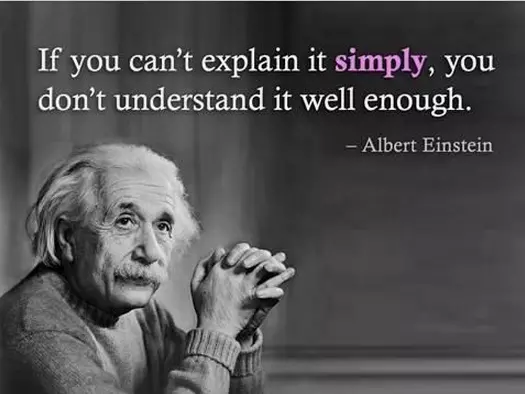I am not a great tweeter. I tweet out my blog and, occasionally, I tweet out other useful resources that I like and think other educators might like, too. However, I do use Twitter in other ways. If I want to get any ideas, inspiration or help from whoever I can, I often turn to Twitter to search for hashtags about my topic of interest. And I follow about 600 people who are mainly inspirational educators so if I want to browse their feeds, it is easy to go to my Tweetdeck and watch what is coming through to keep up to date with the topic of the moment.
Using Twitter. When I am at a conference or meeting, I sometimes take photos and notes on Twitter to make a set of notes which I can refer back to. I also share my notes using the hashtag of the meeting and if I miss anything, you can be sure that someone else will have captured that and I can crowdsource the missing bits. I do see the value in Twitter as an awesome resource pool for educators like myself.
Social Tweeting: Some people are engaged a lot more than me, and use a hashtag to share ideas around different topics in education. Some of them have regular meetings to discuss current events in education eg
#edchatnz and
#ldrcahtnz I can go to those feeds by simply going to Twitter and searching for the hashtag. I can even do do what we call "lurking" - watching the feed and gathering ideas and resources as the conversations unfold but not actively participate. Sort of like being in the back row of a lecture theatre.
Twitter in the Classroom: Some teachers also use Twitter in the classroom, for example
#KidsChatNZ and
#readaloud. Check out those links for more info on how.
What I have found out: I have been doing a little looking into Twitter for a paper I am studying and decided to do a little informal research through a survey. Over two days, I received around 50 responses. Here are some of the results of that.
It is obviously pretty positive for these people, so I am actually surprised that my peers and tutor do not see Twitter as a tool for teaching and learning. I also asked for some ot the ways in which teaching practice had changed.
Here is a doc that lists the results of this question.
Changes in Teaching In a broad summary these were: -
Inspiration, resources and ideas, collaboration, connectivity(esp for isolated schools), latest thinking around education eg play based learning, PLN, , different perspectives, and also like minded people, validation, change in leadership, challenges thinking (out of comfort zone), learning from others, opened door to opportunities, short and sharp, horizontal connections, authentic audience, access to experts, different perspectives, shared learning with parents, reflect, exponential improvement, makes me question more, affirmation.
Changes in Learning: I also asked in what ways students' learning had changed (if any change) and here are the
results of that question. In broad summary these were
Connected, globally and nationally, collaboration, teaches digital citizenship, authentic audiences, projects, purpose to learning, communication with teacher, better engagement, access to experts (Kevin Mealamu, Kid President etc) , encourages reflection and feedback, visible learning tweeted out using photos, videos, alerts students to changes on VLN website, participation and learning from #kidchatnz #readaloud
What can you say to the doubters?
Of course I haven't surveyed any teachers who have joined twitter and then gone away from it. It wasn't exactly a scientifically designed survey but I just needed some ideas on how people were using it and why they found it valuable. 93% of those who answered the survey follow #edchatnz so if you are just starting out that might be a good place to start. Have a look at the link to the
#edchatnz website to see when those discussions take place.
Research: It is quite difficult to find empirical research about the benefits of using Twitter in primary and secondary classes. My tutor is a sceptic and says why would you use it if it is not proven to promote deep learning. But I am guessing it is a relatively new tool in class and also difficult to directly attribute increased achievement (AKA national standard results) to the use of Twitter.
What is deep learning and does Twitter support it? Michael Fullan is working on deep learning pedagogies and I am pretty certain that he would think that Twitter would enable deep learning as the definition of deep learning in the glossary of the
NPDL website is:
Comprehensive learning that includes a range of skills and attributes related to human flourishing, e.g., creativity, connectedness and collaboration, problem solving, wellness, and the capacity to establish and pursue personal and collective visions. An initial summary of deep learning skills might be grouped within the following realms: character education; citizenship; communication; critical thinking and problem solving; collaboration; and creativity and imagination.
My question to you: It seems to me that teachers and learners are flourishing in creativity, connectedness, collaboration and problem solving through this medium. So what do you think, is Twitter a useful teaching and learning tool?

.jpeg)























